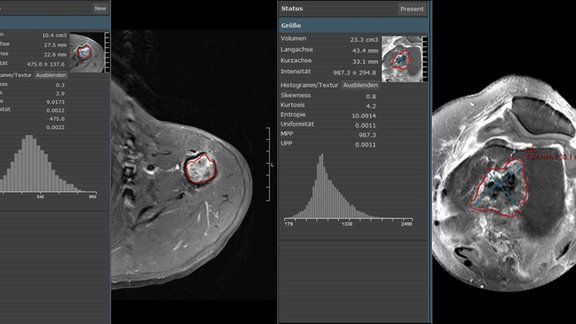Free text reporting in the tumor response assessment of radiologic imaging data is common in clinical routine, whereas in clinical trials standardized computer-aided response assessment is already used rather frequently. Juliane Goebel, Julia Hoischen, Carolin Gramsch, Haemi P. Schemuth, Andreas‑Claudius Hoffmann, Lale Umutlu and Kai Nassenstein conducted a study1 in which they retrospectively re-assessed patients’ images according to RECIST 1.1 using mint Lesion and compared them to the original free text reports. They found that there were many differences in the assignment to the different time-point responses.
Goebel and her research partners chose 100 patients eligible for tumor therapy response assessment based on RECIST 1.1 with a baseline and at least five follow-up CT examinations. Each of the images of the patients had already been assessed by two radiologists in consensus (at least one of them with an experience of more than 6 years in the assessment of tumor response), who had made their evaluation in the form of an unstructured free text report. These reports where then assigned to the tumor response categories complete response (CR), partial response (PR), stable disease (SD), and progressive disease (PD). In a second step, the same images and time points were assessed in mint Lesion by two readers in consensus using the RECIST 1.1 criteria implemented in the software.
Differences between the free text reports and the mint Lesion reports in the five follow-up time points were found in 47%, 38%, 44%, 37% and 44% of the cases with an underrepresentation of SD and an overrepresentation of PR and PD in the free text reports. There were two main reasons for these differences: First, there were many cases in which the follow-ups in the free text reporting were assigned to the PD or PR category although there were only slight changes in the tumor burden. Second, the follow-up assessment was often made in reference to the previous time point and not, as defined in RECIST 1.1, to baseline or nadir.
The researchers concluded that these differences in the unstructured free text reporting are perfectly explicable, since it is simply impossible for a radiologist in clinical routine to measure the change in tumor burdens and find the correct time point (baseline or nadir) for comparison without the support of a software. As the assignment of an examination into a different tumor response category could affect the further therapy of the patients, the authors clearly recommend the use of a dedicated software for structured reporting like mint Lesion in clinical routine.
Reference: 1 Goebel J, Hoischen J, Gramsch C, Schemuth HP, Hoffmann AC, Umutlu L, Nassenstein K: Tumor response assessment: comparison between unstructured free text reporting in routine clinical workflow and computer-aided evaluation based on RECIST 1.1 criteria., in: Journal of Cancer Research and Clinical Oncology



